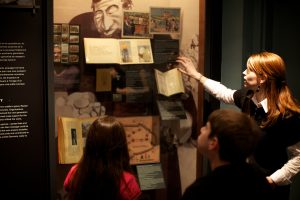The news of Guy Lafleur’s death on April 22 led 61-year-old Montreal postal worker Robert Foxman to reflect on how the Canadiens hockey legend played a role in a crazy Jewish moment that hardly anyone else knew about.
But he had the photographic evidence to prove it actually happened over 40 years ago, with the accompanying negatives stashed inside a grocery bag at home.
Lafleur is pictured in his overcoat along with a kippah and a tallit, while holding a Hebrew prayer book, as if he was praying.

The image was snapped in February 1981, near a restaurant across the street from the old Montreal Forum, where the Habs played.
Foxman, who was 20 at the time, was a student at McGill University, taking a photography course. He needed a good subject for an assignment.
And somehow, it led him to the idea of getting the right winger to respectfully dress up as a reverent Jew.
“I don’t know if it’s because in some ways, Guy Lafleur can look Jewish in certain pictures because… he had a little bit of a bigger nose,” Foxman said.
But he didn’t necessarily think the five-time Stanley Cup champion would go along with this act of “capital-C chutzpah.”
Lafleur died of cancer at the age of 70. His death has prompted a national outpouring of tributes and personal stories of how nice “The Flower” was to his fans—and to the wider community.
Foxman packed his personal bar-mitzvah tallit and the other Jewish religious items into a bag, and took the bus down to the Forum, on a day he knew the Montreal Canadiens would be practicing.
In those days, he recalls, fans could wait outside the team entrance to ask for autographs.
He recalls the pitch being as simple as this: “Mr. Lafleur, I’m taking a photography course and I have an idea for an interesting photo. I’d like to dress you up as a Jewish person.”
Lafleur invited the teenager to accompany him and his business manager to his car parked at the Alexis Nihon Plaza, a shopping centre with a large underground parking area. And it was there that the athlete dressed up “davening” outside of a Polynesian Tiki bar known as the Bali-Hi—which had bamboo poles as decor.
“I was nervous. And he was in a rush.”
The whole encounter lasted for about 10 minutes, as Foxman used his older sister Terri’s Olympus camera to snap one single photo.
He didn’t even ask for an autograph.
“I didn’t want to push things—because I was already pushing things big time.”
The picture became part of family lore, but it was never published anywhere. Instead, a copy was laminated for Foxman’s late father Jules, a salesman, who proudly showed it off to all his customers.
“My father was always going around telling everyone, ‘The whole world is Jewish!’”
As recently as 2017, Lafleur and some representatives of the Habs and the Ottawa Senators attended a Jewish community event at the Library and Archives Canada building. It was timed to coincide with the 100th anniversary of the first NHL game between the Habs and the Sens.
“He’s known as a mensch on and off the ice,” Robert Foxman said. “I think this story illustrates that. The fact that he was able to embrace this crazy idea from this stranger and not really be concerned.”
While he regrets that he did not ever share his effort with the team, let alone with with its subject, Robert asked Terri to finally publish it on Facebook because he’s not on social media himself.
And of all the national tributes paid to ”Le Démon Blond,” this one had to be the most surprising of all. But maybe it’s not so odd to those who couldn’t keep their eyes off Guy Lafleur in his 1970s prime—when many a Passover seder in Montreal was distracted by what was happening in the Stanley Cup playoffs.
“Hockey in Quebec is like a religion,” Terri said. “And Robert found a way to express it.”
Author

Ellin is a journalist and author who has worked for CTV News, CBC News, The Canadian Press and JazzFM. She authored the book Double Threat: Canadian Jews, the Military and WWII (2019) and contributed to Northern Lights: A Canadian Jewish History (2020). Currently a resident of Richmond Hill, Ont., she is a fan of Outlander, gardening, birdwatching and the Toronto Maple Leafs. Contact her at [email protected].
View all posts








